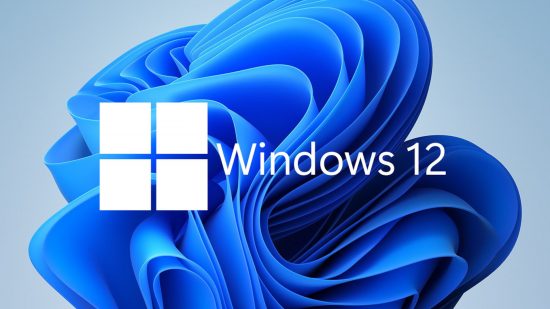It may only be three years old but Windows 11 may already be destined for the chopping block, with a shiny new Windows 12 update possibly arriving in September this year. There’s scheduled to be a big Windows 11 update arriving in this time frame, which is being called the Windows 11 24H2 update, but thanks to its extensive changes to include lots of AI abilities, rumors are pointing at Microsoft taking the chance to introduce this update as Windows 12.
Rumors of Microsoft switching from Windows 11 to Windows 12 have been circulating since at least mid-2022, while late last year we even had Intel’s CFO hinting at a big “Windows refresh” this year. Now, as more details of what could be contained in this overhaul are coming to light, the Windows 12 rumors continue to hold.
Windows 12 release date speculation
The Windows 12 release date could be September 2024, based on current rumors, though no official announcement has been made by Microsoft.
While it may seem like quite a quick turnaround for a new version of Windows, outside of the long run that Windows 10 had, Microsoft has quite regularly updated Windows with a roughly average three-year cadence. The first couple of versions arrived only two years apart then we had Windows 95 and 98, followed by XP arriving in 2001. There was a longer run waiting for Windows Vista in 2006 but then Windows 7 came in 2009, Windows 8 followed in 2012, and finally Windows 10 just two years later in 2014. The seven-year run Windows 10 had was the longest yet – Microsoft did, after all, say it would be the last version of Windows ever.
Windows 12 features
Whether this upcoming big update (codenamed Hudson Valley) ends up being just Windows 11 24H2 or rebranded as Windows 12, these are the features that we expect to see and that have so far been shown in early builds of the OS.
The core features of a possible Windows 12 we expect to be very similar to Windows 11, with the current OS being the foundation for any future updates. However, with Microsoft betting big on AI with its Copilot app, many are expecting broad AI-based additions to the OS, along with a host of other more varied updates. We explore some of the expected features below. All below image credit goes to Windows Central.
Windows 12 AI features
Windows 11 already supports several AI abilities, including camera and microphone effects, and you can also download the Microsoft Copilot app for added AI assistance.
For Windows 12, we expect this functionality to expand to include the ability to analyze what your screen is showing in real time in order to provide contextual prompts for apps, features, or other assistance that may be useful for what you’re doing. Quite honestly, that sounds utterly nightmare-inducing and would be a singular reason not to touch the OS with a bargepole, but exactly what it entails remains to be seen.
Also in the works is an advanced version of Copilot that will be able to do things like remember what you do on your PC and turn your activities into searchable memories that you can later refer back to via Windows Search. Did we already say it’s nightmare-inducing?
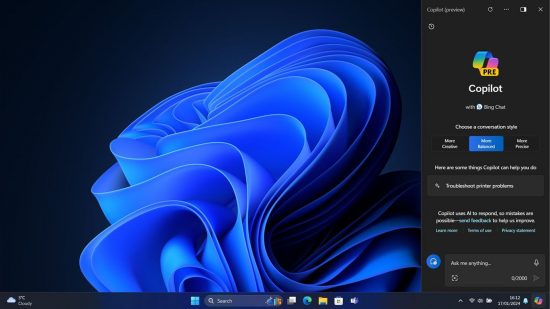
Less alarming and more approachable will be the ability to identify objects and text within images, which can serve a multitude of uses but for instance allow for easily cutting out objects for pasting elsewhere.
Other features include a new AI ability to turn 2D images into 3D parallax ones for the Windows desktop. There’s also a new super resolution feature for upscaling games and videos, and a new Live Captions mode that will even be able to translate what you’re watching in real-time.
In theory, most of these AI features should be able to run on existing CPUs and GPUs, just with varying degrees of responsiveness. For the optimum experience, though, Microsoft and the likes of Intel are pushing the need for neural processing units (NPUs) to accelerate these tasks. Intel’s Core Ultra processors are among the first products to feature these accelerators, though functionally they’re similar to existing Tensor and matrix cores on GPUs.
Windows 12 Snap Layouts
Snap Layouts are what appear when you drag a Window to the edge of the screen and Windows suggests how to arrange the various windows you have open. Or you can invoke the options by hovering over the maximum/window button in the top right of app windows.
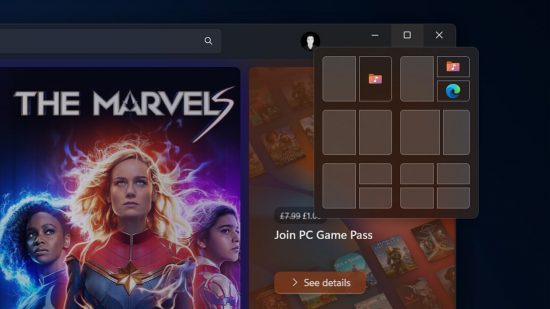
With Windows 12, or Windows 11 version 24H2, Snap Layouts will use machine learning to identify commonly snapped apps and automatically suggest them in the Snap Layout interface when a user hovers over the maximize button on an app window. So, as an example, if you like to have Microsoft Outlook open on one side of your screen and Chrome on the other, Snap Layouts will now offer this layout as a single click when you invoke the Snappy Layouts menu via one of those apps.
Windows 12 File Explorer
Microsoft has been seriously overhauling File Explorer in the last few years and although the changes for Windows 12 won’t be quite so hefty as things like the addition of tabs, we’re expecting some useful changes. For instance, you’ll now be able to create 7zip and TAR files in addition to ZIP files.
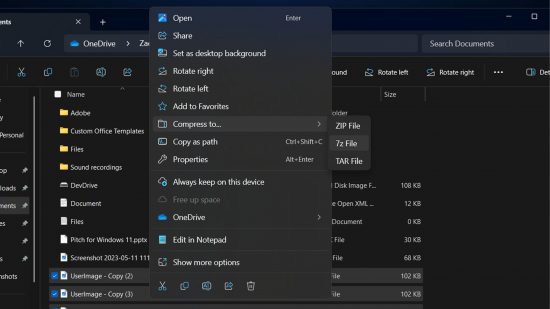
The last Windows 11 update added the ability to extract these files but not create them. Microsoft also says it has improved the performance of File Explorer when opening large ZIP files. Metadata for PNG files will now also be directly editable, allowing users to change file descriptions, add keywords, and attach star ratings.
Windows 12 Quick Settings
Quick Settings is the little popup menu of settings you get when you click on the bottom right of the taskbar. With the next big Windows update this interface will be paginated, allowing you to scroll through all of the quick settings available on your PC rather than have only a selection of them as is currently the case.
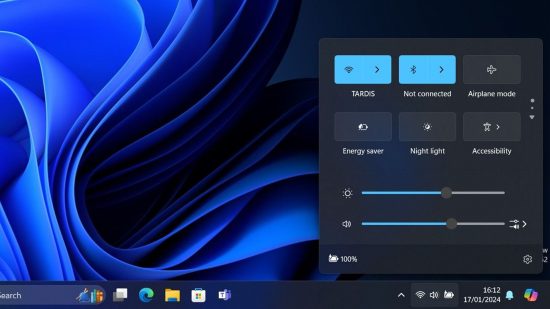
This feels like a much-needed tweak as currently the Quick Settings are a bit of a mess. It’s often not exactly clear what settings are or aren’t available so this should hopefully make things clearer.
Windows 12 Phone Link
Microsoft has for a while now had the ability to link an Android phone with Windows 11 but the next update could see some significant additions to this feature. Perhaps the most relatable for most users will be the ability to use a phone as a webcam, enabling you to have a webcam for a desktop PC that otherwise doesn’t have a webcam as well as allowing for easy experimentation with webcam/phone placement to for a better view.
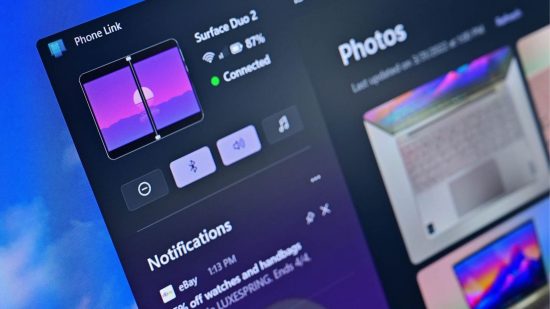
A new settings page is also expected, which will enable the configuration of Phone Link settings, such as disabling webcam linking for certain devices.
Windows 12 Energy Saver
An interesting new addition for the next Windows update is expected to be a new system-wide Energy Saver mode. Similar to how Windows can reduce its power consumption for battery saving on laptops, this new mode will also work on desktops and actively reduce system load. A new icon will appear in the taskbar to indicate Energy Saving is active, making it easy to quickly switch modes between, for instance, work and gaming.
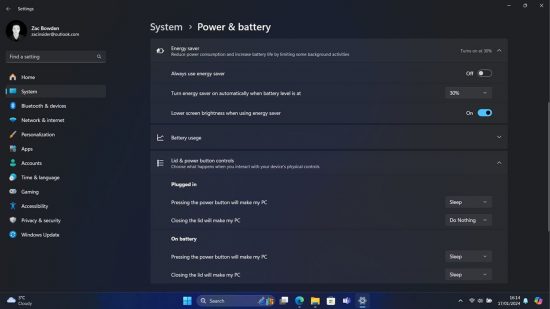
Some more granular settings for controlling hibernation and laptop lid behavior have also been added to the Power & Battery areas in modern Settings. Previously these were still stuck in the Control Panel.
Windows 12 system requirements
We don’t yet know the Windows 12 system requirements but the Windows 11 system requirements include a PC running at least an Intel 8th gen or AMD Ryzen 2000 series CPU, the inclusion of a trusted platform module (TPM), and a minimum of 4GB RAM. There are reports Microsoft will increase the RAM requirement for Windows 12 from 4GB to 8GB, but this hasn’t been confirmed.
What we don’t expect to see, despite the emphasis on its AI abilities, is for Windows 12 to require any sort of NPU processor. Instead, some features that only work smoothly with such processors may simply not be available on such systems.
Are you looking forward to our AI-enhanced Windows future or is it all sounding a little dystopian for you? Let us know your thoughts on the PCGamesN Facebook and X pages or head on over to our Windows 11 story hub to find the latest stories on an OS that isn’t currently quite so alarming.
